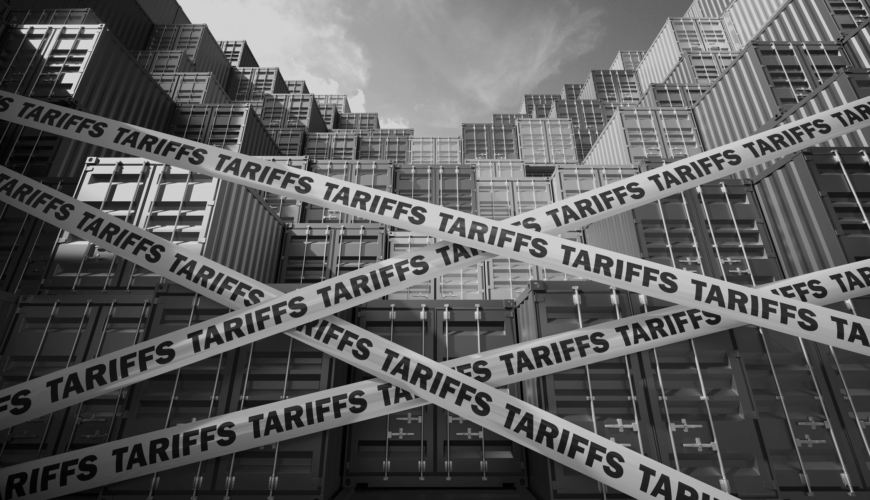Nearshoring and reshoring are emerging as compelling alternatives to the offshoring model. In an era marked by escalating geopolitical tensions and shifting trade dynamics, companies are fundamentally rethinking their global supply chain strategies. The once-dominant offshoring model—sourcing goods from distant, low-cost countries—is being scrutinized under the pressure of rising tariffs, supply chain disruptions, and mounting political instability. In response, nearshoring and reshoring are emerging as compelling alternatives. These strategies, while not new, are now increasingly central to discussions around supply chain resilience, operational risk mitigation, and strategic sourcing.
Redefining Supply Chains: Nearshoring and Reshoring
Nearshoring–refers to the strategic relocation of production operations to countries geographically closer to the company’s core markets. For North American firms, this may involve shifting production to Latin America or the Caribbean, while European companies often look to Eastern or Southern Europe for similar proximity-based benefits.
Reshoring—also referred to as onshoring—entails bringing manufacturing and production back to the company’s home country. This move not only reduces reliance on foreign suppliers but also supports national employment and aligns with broader political and economic objectives around domestic industrial revitalization.
Both approaches aim to counter the vulnerabilities of globally dispersed supply chains, particularly in the face of rising trade barriers and complex regulatory landscapes.
Tariffs as a Catalyst for Change
Tariff impositions have become a central driver in this supply chain recalibration. As governments adopt protectionist policies to safeguard domestic industries or as instruments of geopolitical leverage, import tariffs on foreign-made goods can rise dramatically. This has made production in certain regions economically unviable, especially where tariffs have surged beyond triple digits on specific product categories.
For businesses, the effect is twofold: increased costs and strategic uncertainty. The unpredictability of trade policy changes—sometimes enacted with little notice—exacerbates financial planning difficulties. Many companies, especially those dependent on narrow margins, are reconfiguring their sourcing models to reduce tariff exposure by pivoting toward tariff-exempt or preferential trade regions.
The Strategic Benefits of Nearshoring and Reshoring
- Mitigation of Tariff-Driven Cost Increases
Shifting production away from high-tariff regions allows businesses to maintain cost competitiveness. For companies operating under free trade agreements or regional economic blocs, this can mean duty-free access to core markets—dramatically improving margins. - Improved Supply Chain Resilience and Responsiveness
Closer geographic proximity shortens lead times, enables faster replenishment cycles, and reduces dependency on long-haul freight routes. This agility is increasingly valuable in responding to volatile consumer demand and rapidly evolving market conditions. - Enhanced Oversight and Quality Control
With production closer to corporate headquarters or major distribution centers, companies can more easily oversee manufacturing processes, enforce quality standards, and ensure compliance with internal and external regulations. - Support for Domestic Economic Objectives
Reshoring initiatives often align with governmental efforts to revitalize local manufacturing bases. This can translate into favorable policy support, subsidies, tax incentives, and reputational gains from being viewed as an engine of domestic job creation.
Key Challenges and Constraints
- Labor Cost and Availability
Labor in nearshore or domestic locations tends to be significantly more expensive than in traditional offshore hubs. While this may be partially offset by automation or productivity gains, it remains a central constraint. In some regions, there is also a limited supply of workers with the requisite technical skills. - Infrastructure and Capacity Gaps
Nearshore alternatives may not yet have the scale, logistics networks, or technological infrastructure needed for high-volume production. Developing such capacity requires long-term investment and strategic partnerships. - Capital Expenditure and Transition Costs
Establishing new facilities or retrofitting existing ones involves substantial upfront capital. These costs can be prohibitive, especially for small to mid-sized enterprises or in industries with thin operating margins. - Complex Regulatory Environments
Even when production is moved closer to home, companies must navigate differing legal, environmental, and labor regulations. Compliance demands can delay timelines and increase overhead. - Supply Ecosystem Reconfiguration
Moving production also requires a corresponding shift in suppliers and logistics partners. Creating a reliable, integrated local supply ecosystem is a complex endeavor, particularly for industries dependent on specialized inputs.
Strategic Framework for Transition
For companies considering nearshoring or reshoring, the shift requires more than a reactive pivot—it demands a proactive, holistic supply chain strategy. Key components include:
- Total Cost of Ownership (TCO) Analysis
Moving beyond basic labor cost comparisons, TCO analysis incorporates tariffs, freight, inventory carrying costs, risks of disruption, and quality outcomes. This comprehensive view enables more informed strategic decisions. - Scenario Planning and Geopolitical Risk Assessment
Incorporating macroeconomic, political, and environmental variables into sourcing models is critical. This includes analyzing the likelihood and impact of future trade restrictions, labor unrest, or regional instability. - Supply Base Diversification
Companies are increasingly adopting a “China plus one” or even “China plus many” strategy. Rather than complete withdrawal from legacy sourcing regions, they are building redundancy and optionality into their supplier networks. - Technology-Led Productivity Improvements
Automation, additive manufacturing, and industrial IoT solutions are essential for offsetting higher labor costs associated with nearshoring or reshoring. Digital investments also enhance real-time visibility and operational control. - Policy and Incentive Alignment
Engaging with local, state, or national governments can yield meaningful financial and operational advantages. Many regions offer tax credits, grants, and expedited permitting for companies investing in domestic production.
Sector-Specific Dynamics
Certain industries are more naturally inclined toward nearshoring or reshoring due to the nature of their products and supply chains:
- Apparel and Textiles: While traditionally heavily offshored, rising wages and tariffs in key producing countries are prompting moves to nearby regions with sufficient labor capacity and preferential trade agreements.
- Electronics and High-Tech Manufacturing: These sectors often benefit from automation and require precise quality control, making reshoring increasingly viable when supported by advanced manufacturing capabilities.
- Automotive: Given the complexity of auto supply chains and just-in-time production models, proximity to assembly plants is critical. Regional production clusters are forming as a hedge against global volatility.
- Medical Devices and Pharmaceuticals: Regulatory compliance, safety considerations, and national security concerns are pushing many companies to bring production closer to domestic markets.
Cultural and Organizational Shifts
Beyond physical relocation, successful nearshoring and reshoring also require changes in corporate culture and organizational priorities. Risk management must be embedded into procurement and operations, with cross-functional teams collaborating to design resilient supply chain networks.
Leadership teams must also adopt a long-term perspective. While the initial transition may be more expensive and logistically demanding, the long-term gains—greater control, lower disruption risk, and enhanced customer satisfaction—often outweigh the short-term challenges.
Environmental and ESG Implications
Sustainability is an increasingly important factor in supply chain decisions. Nearshoring and reshoring can contribute to environmental goals by:
- Reducing carbon emissions through shorter transportation routes
- Allowing for better enforcement of environmental regulations
- Enabling closed-loop manufacturing models that minimize waste
From an ESG (Environmental, Social, Governance) standpoint, sourcing closer to home may also support fair labor practices and increase transparency—key considerations for investors and consumers alike.
Looking Ahead: The Future of Global Sourcing
Nearshoring and reshoring are not temporary trends—they represent structural shifts in how companies think about operational risk, agility, and sustainability. As geopolitical tensions persist and trade policy remains uncertain, the importance of having robust, regionally integrated supply chains will only grow.
Key future drivers include:
- Continued Volatility in Global Trade Relations: Whether driven by elections, conflicts, or economic nationalism, trade policy will remain a moving target. Strategic flexibility will be essential.
- Digitally-Enabled, Regionally Resilient Networks: The winners in the new global landscape will be those who leverage digital technologies to build agile, connected, and regionally resilient supply chains.
- Public Policy and Industrial Strategy Convergence: Governments will play an increasingly active role in shaping supply chains through regulation, incentives, and national industrial policy. Companies must be ready to engage proactively with these evolving frameworks.
- Consumer Expectations: As consumer awareness of sustainability and ethical sourcing grows, companies may face brand and reputational risks if their supply chains are perceived as opaque or exploitative.
Final Thoughts
In the face of tariffs, geopolitical instability, and a rapidly changing global trade environment, nearshoring and reshoring offer a strategic opportunity for companies to regain control over their supply chains. These models support not only operational resilience but also brand reputation, regulatory compliance, and long-term profitability.
However, the transition is complex and requires a multifaceted approach. Success depends on careful planning, robust analysis, cross-functional alignment, and a willingness to invest in the future of supply chain operations.
For organizations prepared to embrace this challenge, the reward is a more responsive, resilient, and strategically aligned supply network—better equipped to navigate uncertainty and thrive in the next era of global commerce.


